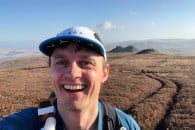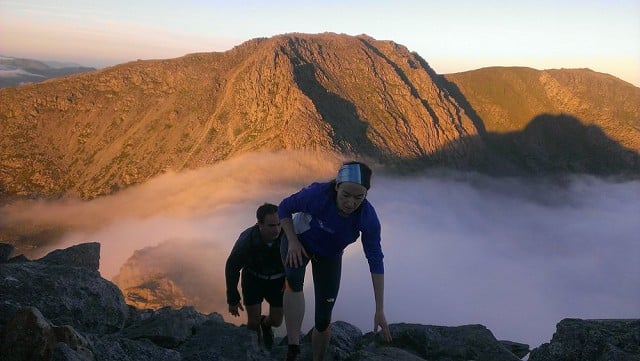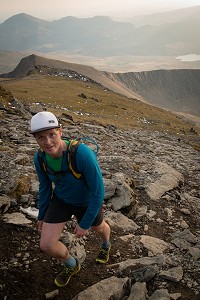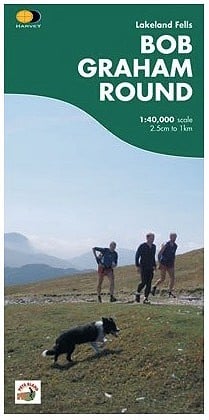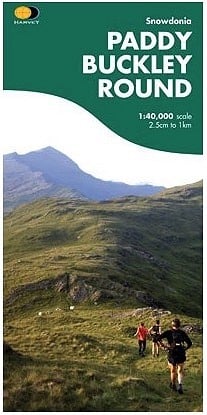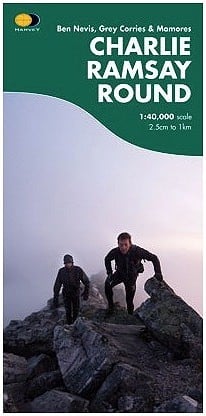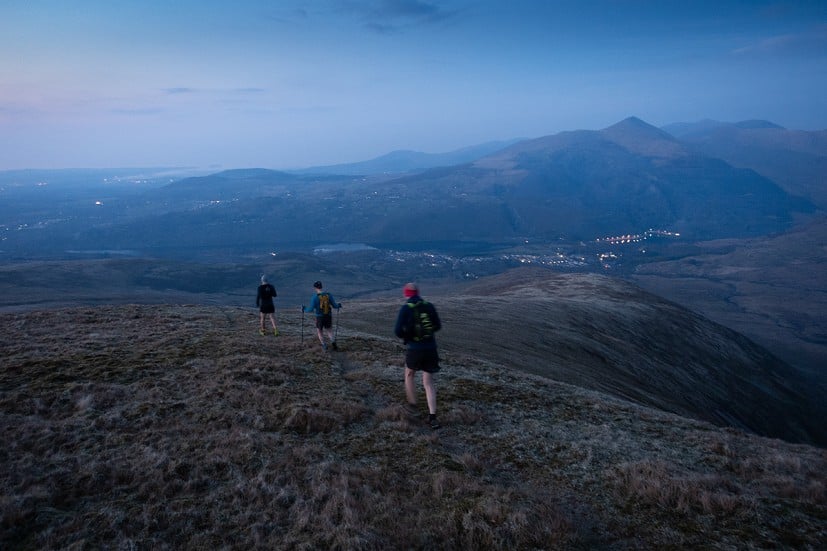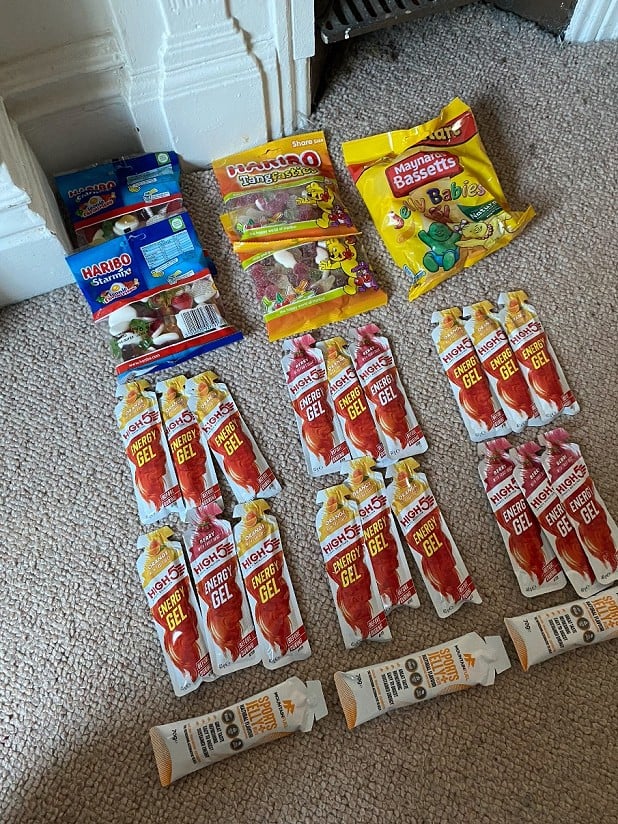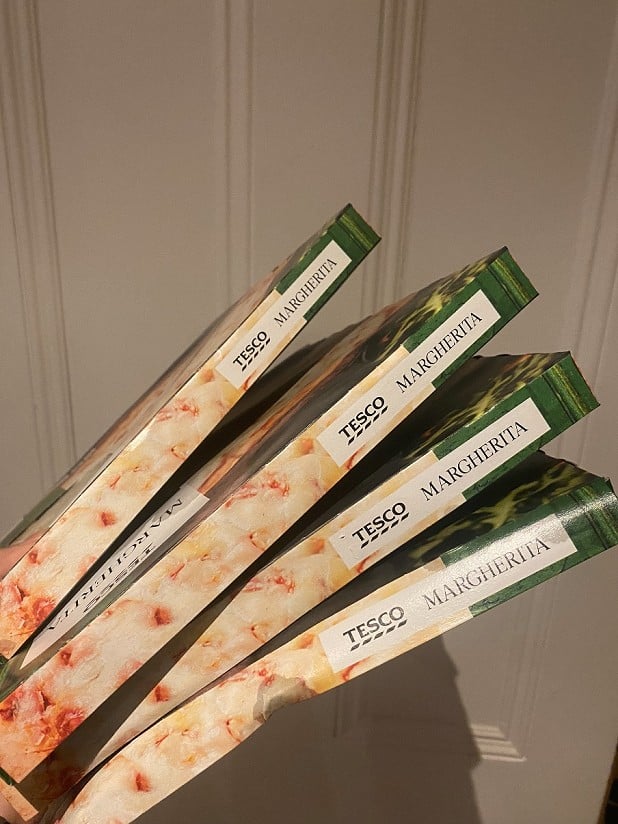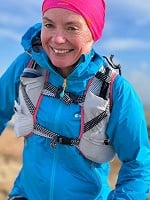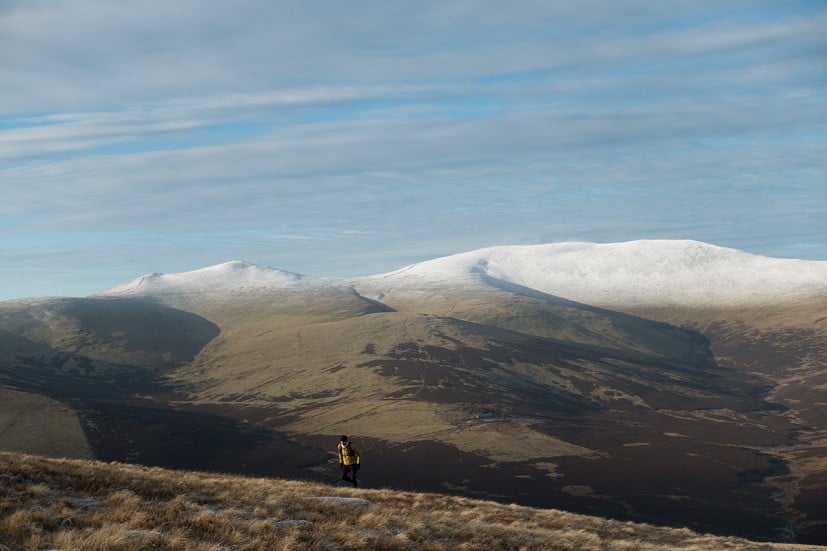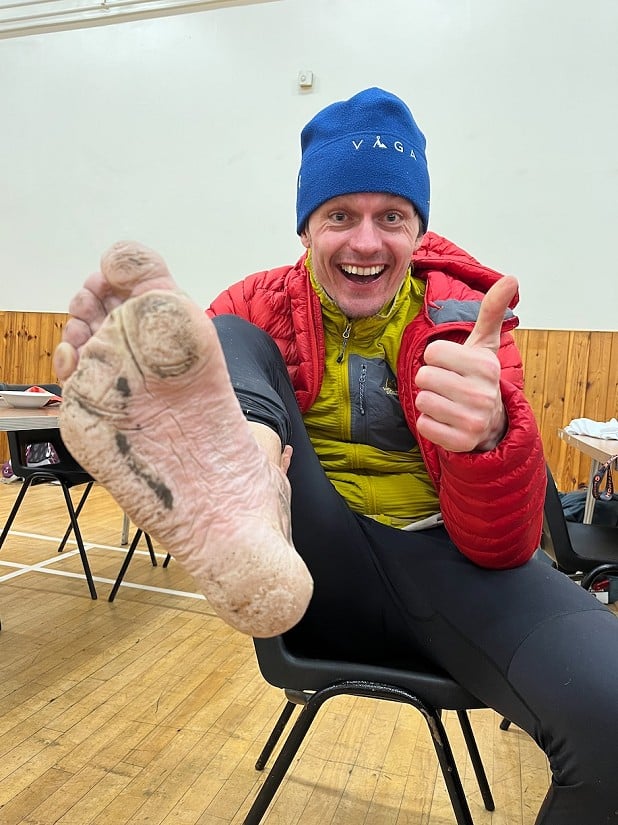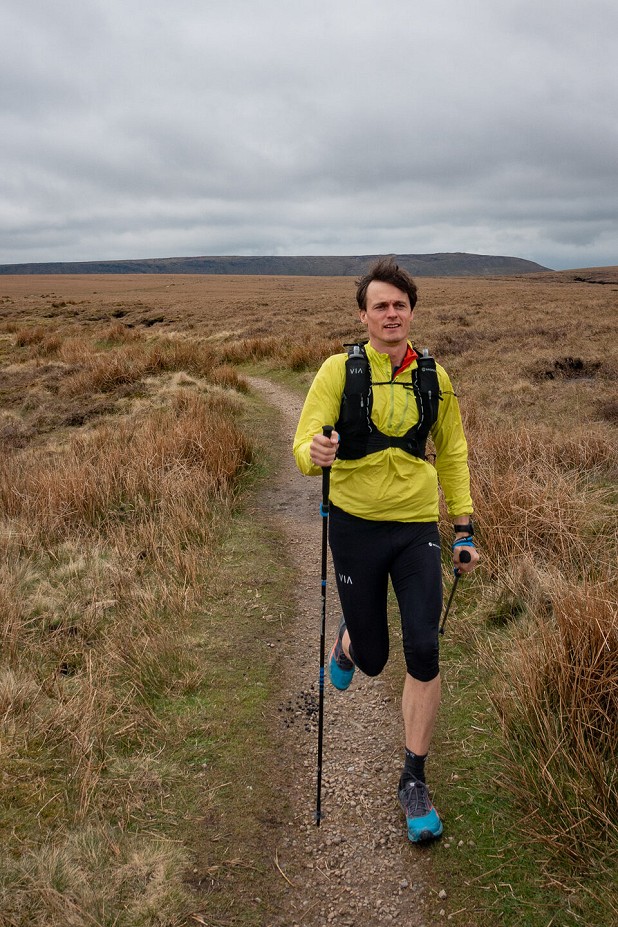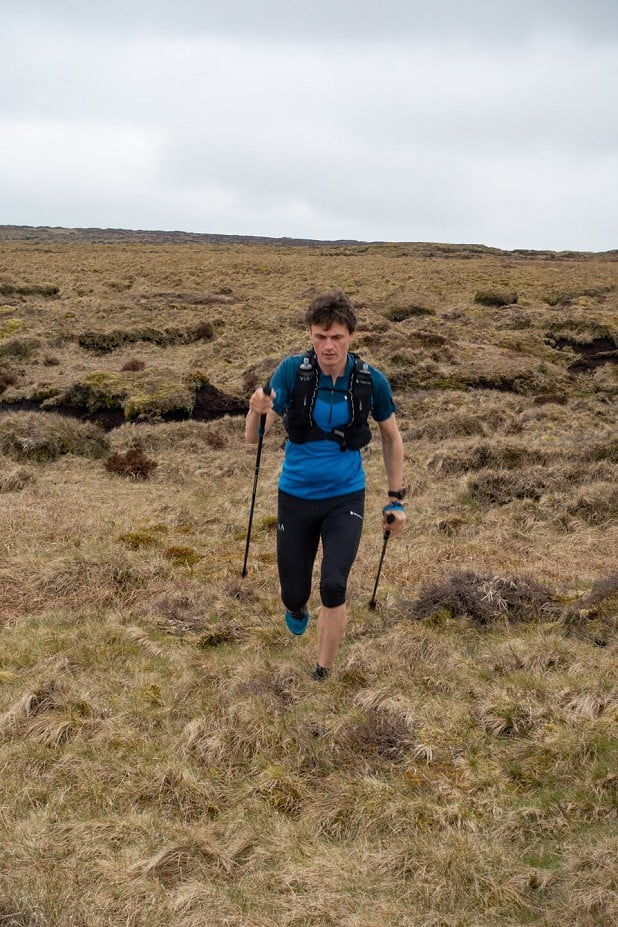Part 2. Reccying
Reccying is a lot more than just getting to know the route: it's also about taking time to familiarise yourself with how you feel whilst running for hours upon end; what food works and what doesn't; how you deal with highs and lows; the kit that you're wearing; and a whole lot more. In short: reccying is an absolutely essential part of the big round process. Don't leave it to chance: stack the odds in your favour.
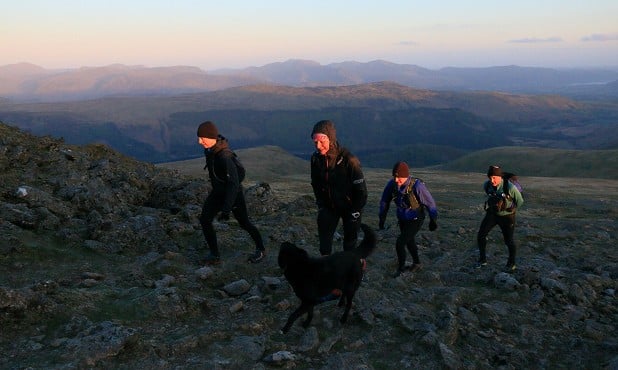
Nothing can replace a good reccy as far as efficiency is concerned
We'll break each down in turn, and look in detail at how to get more than just knowledge of where you're going out of reccying the route. However we'll begin with talking about navigation, because that is the reason you're out there, and if you get it wrong, you'll likely lose a lot of time on the big day itself (making a big day even bigger).
It's worth noting that in this article we won't be going into any specifics regarding the routes themselves. When it comes to finding the best lines, and those sneaky time-saving shortcuts, the best place to learn them is on the hill. That said, for a broad overview of the routes, as well as some inspiring interviews, it's worth checking out David Lintern's 'The Big Rounds', published by Cicerone Press.
And for a blow-by-blow route description of the Bob Graham Round, have a look at these Route Cards on UKH:
Navigation
It may seem as if I'm stating the obvious: being familiar with where you're going will gain you a lot of time, while not knowing will lose you a lot more. On big rounds, small efficiencies make a massive difference, because over such a large timeframe seconds amount to minutes and minutes add up to hours.
Get to know in advance what works in terms of food, clothing and footwear. Don't try anything novel on the big round itself
It's dismaying how quickly time is lost, not least because of how hard it is to gain back. As such, do everything within your power to get to know the route, and not just on a map, but on the ground too, because nothing can replace a good reccy as far as efficiency is concerned.
Reccying isn't always easy, because the A-B nature of most of the legs mean that it's often tricky to do them on your own. As a result of this it's easiest to go out with other people, not least because you can car share, but also because it makes it more fun, and potentially generates that vital pool of pals who may be available to support you when your time comes. There's another benefit though, which is that when there's more than one of you it's a lot easier to test out alternative lines, go different ways, and find whichever is fastest. You may also be able to draw from any prior experience among those you're running with, giving you some insight into the best lines.
Map & Compass vs. GPS
Much like every aspect of a big round, the decision regarding what you use to navigate with is entirely yours to make. Whilst I would always say that the ability to use a map and compass is essential, and is very much 'in the spirit' of fell running, GPS use is (rightly or wrongly) commonplace. Electronic means do have their pitfalls, with a breadcrumb trail telling you far less than a map does about the landscape ahead of you, and whilst they can give you an instant handle on whether or not you're going in the right direction, what they can't tell you is whether or not you're taking the best line.
Do your reccys at the pace you'll want to be travelling at on the big day, just so you know what it feels like. It's surprisingly slow
Ultimately though, the use - or not - of electronic aids is a personal your choice. If it detracts from your own experience, my advice is this: don't use them. Others may feel differently, and with the provision of a whole range of GPS devices, including phones and watches, there's a lot of options available.
One thing I would say is that whatever device you do decide to use, be sure you can actually use it. I've heard of plenty of people trying out something for the first time on the big day itself, only to realise they haven't got the faintest idea how. Also check that its battery life lasts the necessary time required. Some GPS watches only just about see you to 24 hours (the Suunto 9 being a good example). Turning your phone onto airplane mode is a good tactic in order to preserve battery life, but it might - if you are reliant on it - be worth taking a compact charger and cable so you can top it up if it becomes necessary.
Falling back on the old map and compass, there is a fantastic array of custom made maps by Harvey Maps, which are great because they contain not only the entire route, but also mark the standard line and its relevant peaks.
How does it feel?
When reccying a big round for the first time many people seem to get quite dispirited. I've spoken to several people over the years who've held the ambition of doing the Bob Graham, only to reccy a leg and go on to say "I could never do the whole thing" immediately after. I am pretty sure that this is what the majority of potential suitors conclude, becuase there's no denying that the magnitude of the undertaking is hugely indimidating, and - at least to begin with - each individual leg, in isolation, feels seriously hard. The key is to keep going, because it gets easier, and before you know it you'll be linking two legs at a time, and sometime after that standing outside Moot Hall of Glen Nevis Youth Hostel.
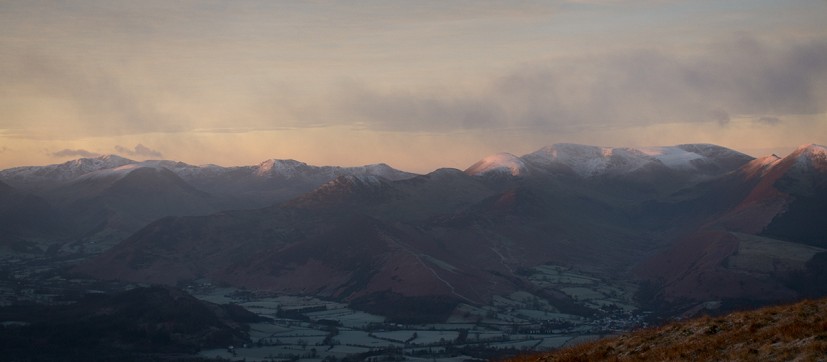
A lot of what you're getting used to in the reconnaisance phase is 'time on feet', becoming comfortable with running, jogging, walking and/or crawling for long periods of time, to the point at which it feels normal.
The biggest error people make whilst attempting big rounds is to go too fast. The main reason for this is because the pace you actually need to go really is remarkably slow. There's also that temptation to go a little quicker because, at least in the short term, you tend not to feel the concequences, and early on there's often the desire to create a bit of a buffer. Over 24 hours the consequences will come back to haunt you, so you need to make sure that you're going at a sustainable pace, and generally speaking that means you'll be wanting to slow yourself down more than speed yourself up. In light of this, it's worth doing your reccys at this pace, just so you know what it feels like.
No matter what your pace is, nor how sustainable it feels, it won't be possible to continue unless you keep eating...
Food, glorious food
Big rounds are an eat-a-thon and if you're not eating, it's usually a sign that something is wrong (or is about to go that way).
I'm not aiming here to provide professional advice on nutrition, because that's beyond the scope of my experience and this article. However, what I will do is relay a set of personal experiences on what has worked for me and for others.
My own approach is to eat little and often, once every 20 minutes, so that I have a steady source of energy coming into my body. This little and often approach is quite gentle on the stomach and is a lot easier to digest than a large lunch. Historically I've preferred savoury to sweet on big rounds, but have tended to blend the two. Curiously though, what I've actually wanted has differed between each of the big rounds that I've done.
On my Paddy Buckley, I remember eating cheese and pickle ciabatta sandwiches (which tasted absolutely amazing), buttered malt loaf and Tyrells sea salt and cider vinager crisps. On my Bob Graham I had jalapeno-infused rolls filled with humous and olives, which went down really easily. I knocked back a few skittles for sweetness, then a cup of tea at one of the road stops, which tasted totally and utterly incredible. On the Ramsay, it was quite similar, but I had a load of Lidl's own brand raw bars (cocoa orange being the best by far) that seemed to hit the spot.
If there's a moral to this, it's that you're never entirely sure what your body is going to want on the day, but also - on the day, don't do anything too unexpected, like try to eat something you've never tested before. I remember spending over £100 at the supermarket the day before I did the Paddy Buckley, buying an insane (and probably unjustifiable) amount of food, which ended up lasting me for months afterwards; however, when you've got a car for support to carry it all around, the last thing you want to do is run out of something that's working for you, so you might as well (in my opinion) buy everything in bulk. You can use it on other runs throughout the rest of the year.
Whilst reccying, it's essential to get to know what works. Some things are more palatable than others, with sandwiches and snickers bars being examples of things that can cause quite a lot of irritation, taking quite a while to chew - particularly when your mouth is dry. Gels represent the opposite end of the spectrum, being fantastically easy to pour down your throat, but they also have their drawbacks. The first drawback to anything sugary is that you'll burn through that energy quickly, compared to slower releasing food. Also - and again, this is a personal thing - many people have trouble when they've eaten too many gels, because their guts essentially turn into a gel, which isn't an overly pleasant sensation, and tends to have bowel-based concequences too.
Experiment with a broad range of food, just so you know what you like, and what works for you, on the big day itself. Remember: if you stop eating, then sooner rather than later you will stop making progress.
If you've got a team supporting you on your big day, this isn't quite as much a factor as if you are running on your own, but the principle is one worth bearing in mind: your body can take in roughly 60g of carbohydrates per hour.
There are a few ways around this, but that is the calculation I tend to use, and I apply this not only to the food I'm going to eat, but the amount I take. Or at least that's the plan. The reality is that I've often taken far too much, which is unecessary on several levels, but particularly in terms of the extra weight you're going to have to carry. Look at the number of hours you're expecting to run, add a little bit more as a buffer, then stop, review what you've taken, and revise accordingly. I reckon I took something ridiculous like double what I should on the Bob Graham and it makes no sense, as it's a waste to have carried all that extra weight.
One final thing to consider is the food you'll take specifically for the road crossings. Whereas you'll always be thinking of the weight of the food you're carrying, this isn't a concern for the road crossings (except on the Ramsay, where there aren't any, and your support are going to have to carry them in - if you have support). I have varied what I've had here from pasta through to rice and curry, with other popular options including porridge and rice pudding. A cup of tea is always revitalising, as is a full-fat can of Coca Cola - mostly for the sugar and caffeine.
Again, I'd repeat the sentiment that I am by no means a nutrition expert. I am simply someone who's got very, very hungry.
Kit
Everyone has their own personal perferences when it comes to kit and due to the varying approaches, and different terrain on each of the three big rounds, it's impossible to say that an single piece of kit is 'the one', because it'll vary from round to round, style to style, person to person and with the weather. For example, if you're doing a supported round there's a chance you won't even need a running vest/bumbag, as you'll have a team of people carrying everything for you; however, if you're running solo, unsupported - or supported, but carrying your own stuff - then a vest will be an absolute necessity.
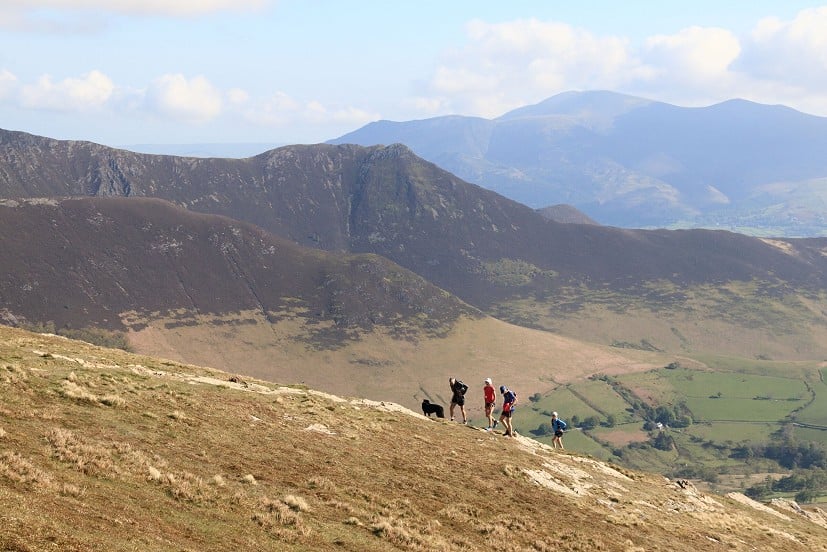
In order to ascertain what you want to use, you need to use whatever it is throughout the various reccys and long runs leading up to to the big day. Let's run (sorry) through a few key categories:
Clothes
Most shorts, t-shirts and vests are comfortable for a few hours, but are they comfortable for 24hrs? Over the years I've heard all sorts of stories, with one involving someone suffering from chafing so badly that they had to remove their shorts and run bare buttocked, which - as you can imagine - presents all sorts of other problems. You don't want to be that person, so make sure you're decked out in something that you know you're going to be able to wear for an extended period.
It's worth taking preventative measures before chafage occurs too, using whatever your preferred potion may be. In the past I've used Vaseline, but whilst preparing for the Spine Challenger South I got recommended 2Toms Butt Shield, as that (apparently) leaves less of a residue. It's also worth taking some Hyperfix tape, as this glides a lot better than Kinesiology Tape (aka. K-Tape), which has much more texture to it.
Weather has a huge impact on the kit you use, but irrespective of the weather it's worth taking the essentials in case of emergency, which should include a waterproof jacket/trousers, a spare warm layer (e.g. fleece or insulated jacket) and a bivi bag. It's astounding how quickly your body temperature drops when you're exhausted, something that was proved when I reached the end of my Rigby Round. Satisfied with my effort I sat down on the bench opposite the Norwegian Stone for five minutes to soak up the early morning atmosphere. By the time I stood up I was shivering so hard I could barely get the keys in the car door. It took the best part of an hour to warm back up and had I been up on the hill with a twisted ankle, I would have needed to make some proactive steps much earlier than I did to prevent becoming fully hypothermic - and that was on a warm summer day!
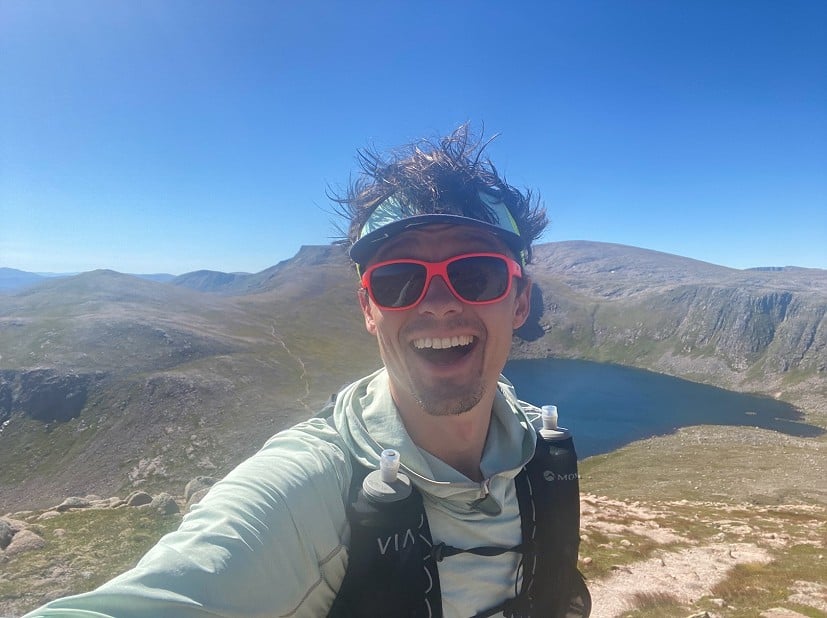
Whilst cold is clearly an issue, so too is warmth. On the Rigby Round mentioned above the forecast was so warm I opted to wear a long sleeve protective suntop, which was rated at SPF50. Whilst I knew it would be warmer, I also knew it would provide me with the protection I needed, and the hood would also help to keep the sun off my head. Alongside this I wore a visor, the world's shortest shorts, and as much factor 50 suncream as possible, with a small tube of extra to re-apply throughout.
If it's looking wet, you've got to ask yourself some soul searching questions, with the first being - is this what you really want? Spending 24hrs battling the elements is (unsurprisingly) a whole lot tougher and that's not what most people are after, but if you do decide to embrace the challenge make sure you've got yourself a suitable waterproof. Whatever you've got must be fully functional, comfy to run in, and think about giving it a wash/proof in the lead-up to make ensure it's at tip-top form (click here to view our 'how to' guide).
Shoes
Feet falling apart is high up the (long) list of undignified reasons to retire from a big round, so make sure you're wearing shoes (and socks) that are both familiar and comfortable. Test out whatever you're hoping to use on long runs, because you want a good idea of how they'll react to your feet swelling before deciding whether or not they're appropriate. One of the common misconceptions is that you can simply size-up from the shoes you're used to wearing. Whilst this is possible, it's not additional length that you're after - it's additional width - and your best option is to find a decent fit all-round (and getting a longer shoe is unlikely to do that).
Another ace up the sleeve for the big day is to change shoes (and socks) at the road crossings. This obviously has a time cost associated with it, and is a bit of a luxury, but it's one that'll pay dividends if you finish with your feet in good condition.
Other popular methods of preventing hot spots and blisters include preemptive taping using K-Tape. If you do decide to go down this route be sure to trial it out on training runs, dialling down your method. The last thing you want to do is experiment with it on the day itself, because there's a very definite art to taping and if you get it wrong it'll likely do more harm than good.
Another interesting option is to apply a waterproof barrier cream, such as Trench foot cream. Much like K-Tape, this is something you want to experiement with beforehand in order to get the application right, and assess whether or not it works for you, but it's popular amongst ultra distance athletes and a good option for when there are mixed conditions underfoot.
Poles
This section is realistically for the people who are sitting on the fence regarding poles, because those that know whether they like or loathe poles will have already decided whether or not they're going to be using them.
Poles certainly have a place, but aren't for everyone. In the same way that some people like zero drop shoes, some people love poles, but equally, there are many that don't. This is something you'll need to establish well in advance of the big day, by using them in training. Poles are not something you can just start using and expect to use them well, as it takes practise to refine the technique to the point that it's a help and not a hindrance.
If you do find you get on with them then there's a multitude of different benefits. For me personally their biggest benefit is their ability to propel you up and over steep and rough ground, where it feels like they give you a load of extra oomph, but without using any extra energy. For others it's their use whilst descending, which reduces the fatigue from the repeated pounding, leaving your legs feeling fresher for longer.
Either way, you won't get any of these benefits without using them in advance, so don't just rock up on the day and give them a go, because you'll feel a bit like Bambi, with these two strange things in your hands, not knowing what to do with them!
Accessories
Unless you're going seriously quick you're going to need a headtorch. Most people aim to do their Big Rounds when there's a lot of daylight, but this isn't a reason to scrimp on the quality of the headtorch you use, as there's nothing worse than losing time as a result of not being able to locate the best line - or, for example, the summit of Stybarrow Dodd - because of a lack of light output. I'd look towards using a 400 lumen headtorch as a minimum, but having a few extra would be handy, with the option of boosting up to 750 lumen being useful.
It's also worth considering the battery life of whatever torch you're using and the effect that the various brightness modes have on it, because however bright though the torch you're using might be, it won't be once the battery runs out. There are ways in which to better manage battery life, including reducing output whilst going uphill, as you tend to be going quite slowly, then using a moderate setting for the flats
Other Ideas
In the last article we discussed the idea of 'over-reccying' and the erosion that can be caused as a result of the routes being practised too many times. Whilst it's important to spend time getting to know the route, there are other routes to run - and it's nice to see other areas - so try to venture out elsewhere as an excuse to get some extra time on your feet.
Here are a few ideas of varying distances which act as perfect Big Round training:
Lake District
- The Abraham's Tea Round - 46km / 3200m ascent
- Fishers Espresso Round - 20km / 1000m ascent
- Gerry Charnley Round - 63km / 4140m ascent
- Paterdale Parish Boundary - 44km / 3114m ascent
- Any Lakeland Classic Fell Race - varying length/ascent, but all good - and all hard!!
Peak District
- Outside Hope Valley Round - 32km / 1360m ascent
- Kinder Dozen - 37km / 3200m ascent
- Kinder Killer - 47km / 2800m ascent
- 15 Trigs - 88km / 2590m ascent
Eryri/Snowdonia
- Welsh 3000s - 47km / 3800m ascent
- Corris Round - 48km / 3165m ascent
Scotland
- Lochaber Traverse - 25km / 2500m ascent
- Mamores Round - 35km / 3000m ascent
- Or indeed any big day out/link-up in the Scottish mountains...
